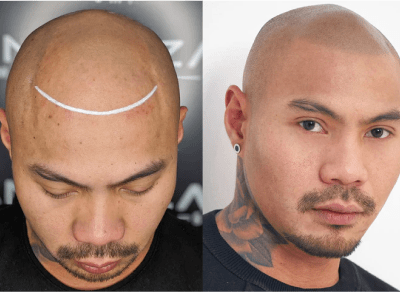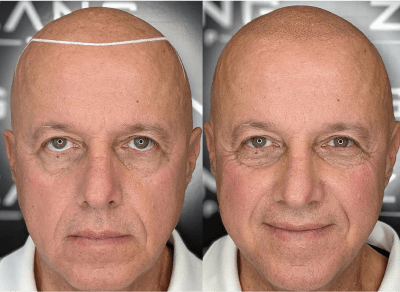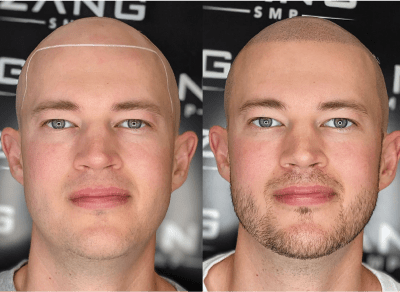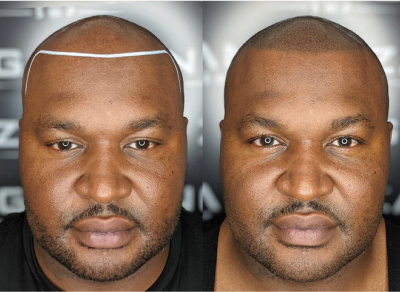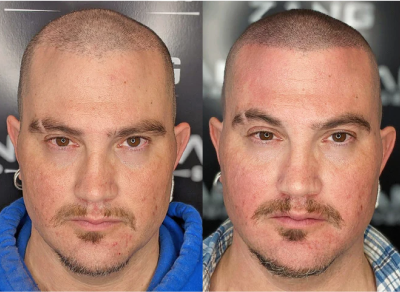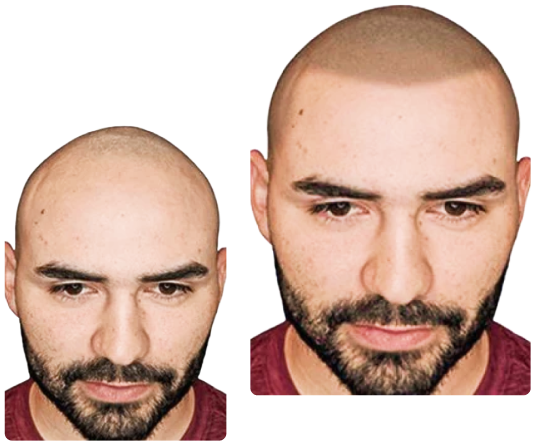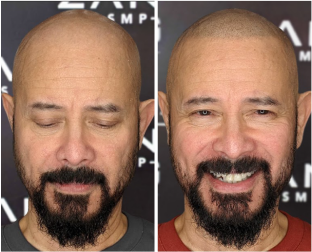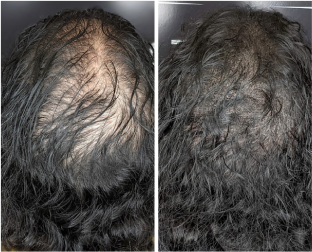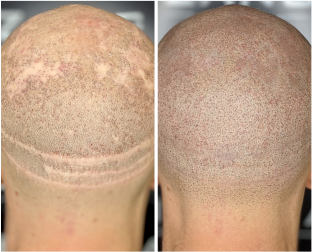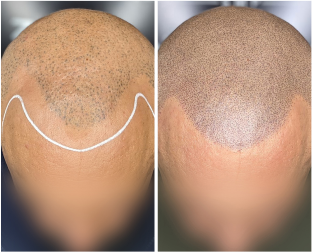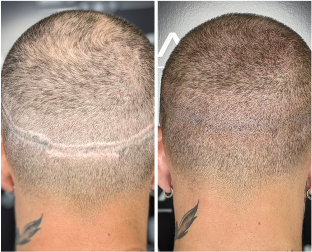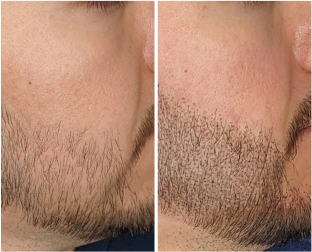How is Male Pattern Baldness Diagnosed and How Does it Influence Hair Loss?
Male pattern baldness is recognized by its characteristic hair loss pattern, mainly impacting the hairline and crown, where genetics and hormones are key contributors.
Stages of Male Pattern Baldness
To evaluate hair loss severity, experts use the Hamilton-Norwood scale, with stage 1 being the least severe and stage 7 showing total baldness on the top of the head. Patients presenting with Norwood stages 1 to 3 usually have a hairline that recedes mildly to moderately.
Those with Norwood 4 to 5 show severe hair loss at the front and substantial thinning at the crown. Stages 6 to 7 reflect near-total or total hair loss on the top of the head.
There are also some less common forms of male pattern baldness, such as uniform thinning of the entire scalp with no hairline recession or hair loss at the crown without hairline changes.
Treatment For Male Pattern Hair Loss: Scalp Micropigmentation
Scalp Micropigmentation (SMP) is a non-surgical method for treating male-pattern baldness. It uses a form of tattooing to apply a pattern on the scalp that resembles hair follicles. SMP can deliver a full head of hair appearance, regardless of how extensive the hair loss may be.
SMP can stimulate hair growth and achieve any level of hair density instantly, unlike hair transplants that depend on a limited supply of donor hair grafts and require recovery time.
Using organic, plant-based pigments, Zang SMP deposits these into the scalp. The pigments replicate hair follicles, offering a significant transformation from a bald head to a cropped (buzzed) appearance.
SMP for men offers a non-surgical alternative to painful hair transplants. It allows you to achieve the hair look you prefer. If you have an unwanted bald head, we can provide help. SMP will give you the hair needed to boost your image.
For SMP, two to three treatments are commonly required. The first and second treatments occur a week apart for male-pattern hair loss. A third treatment, if needed, will take place one to three months later.









